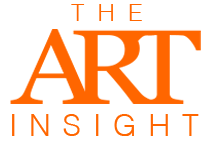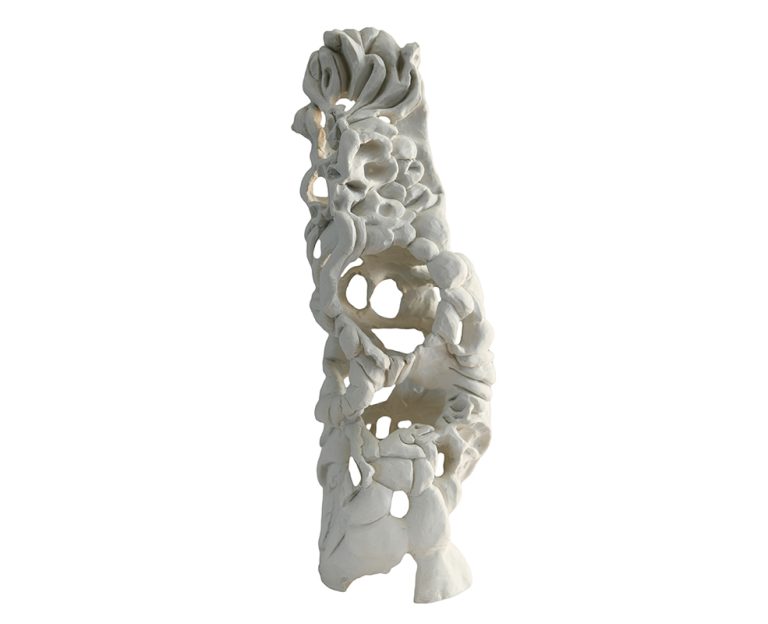Carolin Rechberg approaches art as a living dialogue rather than a finished object. Born in Starnberg, Germany, she works like a traveler gathering impressions from every medium she touches. Her practice moves freely through painting, ceramics, sculpture, installation, sound, performance, poetry, and photography—each one another language of perception. What connects them is not style, but presence. Rechberg’s process is rooted in awareness—the feeling of material meeting gesture, of motion transforming into stillness. Her work is a reminder that art is not separate from the body; it begins with it. She treats creation as an act of listening, an exchange between mind, hand, and matter. What emerges is not a statement, but an experience—an invitation to slow down, to witness, and to feel the space that art can open inside us.
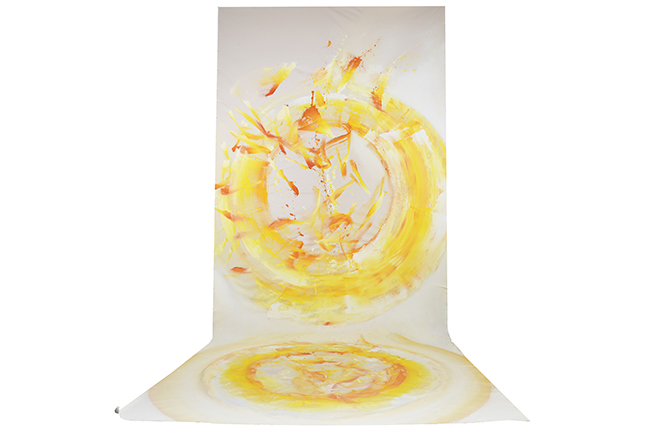
Cradle the Essence of Your Being / A Gateway to Conscience / Ascend to Your Potential of Presence
Painting — Gesso and Tempera on Raw Canvas (H 308 × W 211 × D 179 cm, 2025)
Encountering Cradle the Essence of Your Being feels like stepping into the trace of a movement rather than viewing a static painting. The work seems to breathe. Its golden and amber tones radiate in circular motion, drawing the eye inward and outward at once. Light and gesture fuse into a single presence—a pulse that suggests both emergence and release. Rather than depicting something, Rechberg channels the act of becoming itself. The piece hums with energy, as if caught between meditation and momentum.
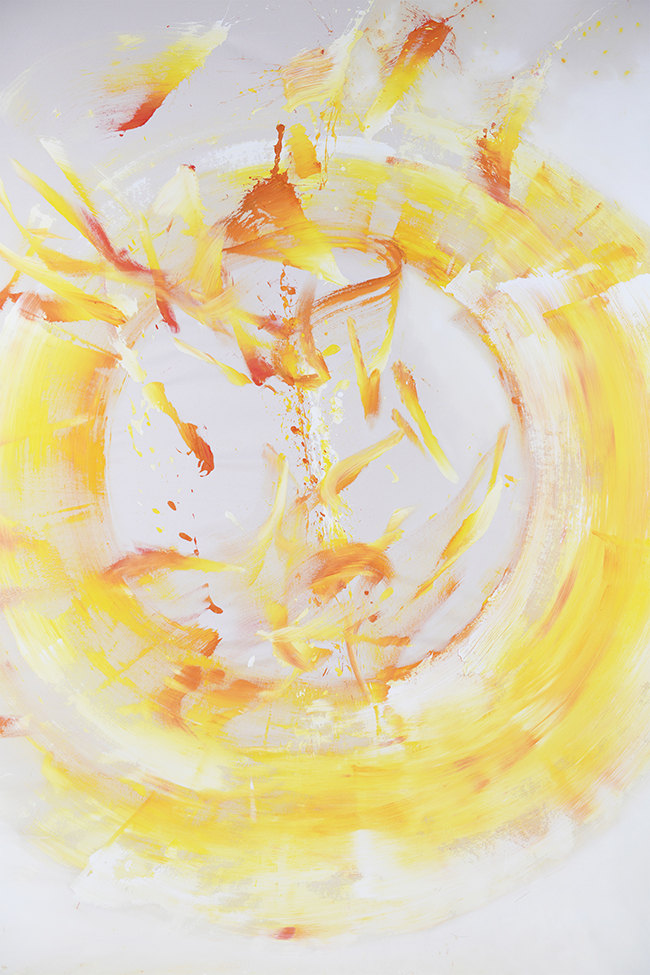
The painting defies the limits of the wall, cascading down onto the floor and into the viewer’s space. This extension transforms it into something immersive, blurring the edge between object and environment. The canvas becomes a continuation of thought, a surface that mirrors the rhythm of breathing or walking—continuous, fluid, and alive. It is a reminder that art can be an event rather than a scene.
Rechberg’s materials—gesso and tempera—connect her to centuries of craft and devotion. Their rawness resists polish, keeping every mark visible. The transparency of her process is intentional: there is no attempt to hide the journey. Each stroke feels immediate, like a record of contact between artist and surface. What remains is not just a composition but a state of awareness—how gesture, attention, and energy converge in a fleeting instant.
The painting carries a quiet ritualism. The circular movements echo sacred geometry and meditative repetition, yet nothing feels rigid. The energy is open, expanding yet centered, much like the balance one seeks in meditation. Standing before it, one senses both the vastness of creation and the intimacy of presence. The work doesn’t explain—it simply exists as an opening, a threshold through which consciousness passes and returns renewed.
Contemplation Stone XXI
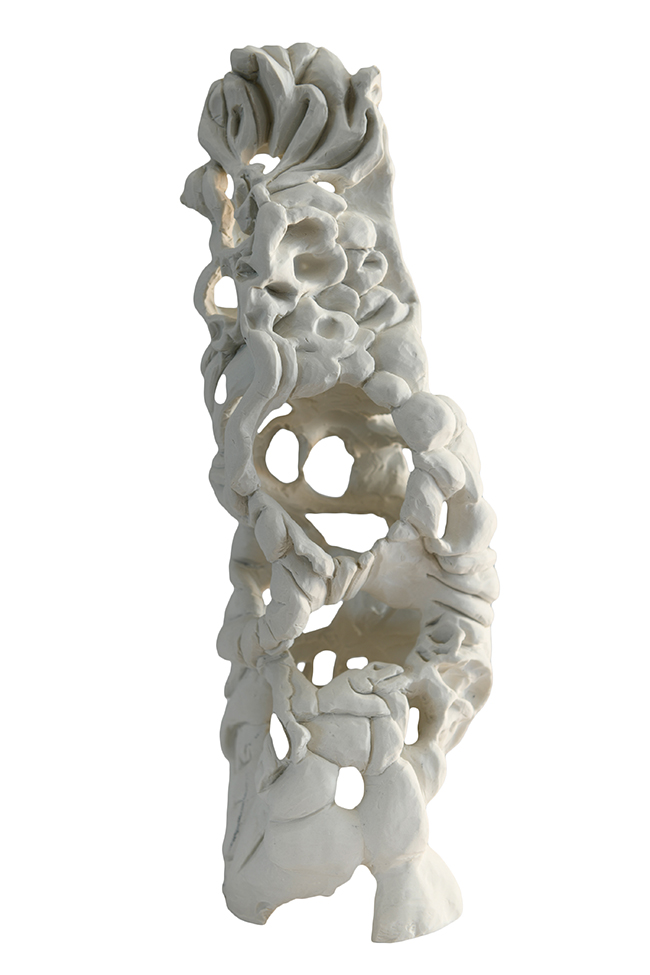
Sculpture — Porcelain (H 43 × W 15 × D 14 cm, 2021)
Where Cradle the Essence of Your Being reaches outward, Contemplation Stone XXI turns inward. This porcelain sculpture stands like a vessel of silence. Its surface ripples and folds, full of openings that allow light to enter and escape. It feels both fragile and enduring, as though shaped not by hands but by elements—water, wind, time. Each hollow and curve invites pause. The piece does not demand attention; it absorbs it, transforming looking into meditation.
Rechberg’s approach to form is intuitive, almost geological. She doesn’t sculpt objects so much as she uncovers them. The porcelain holds traces of movement—creases, twists, small collapses—that read like the memory of touch. The result is a structure that feels alive, breathing through its own emptiness. As one moves around it, perspective shifts; what was once solid becomes open, what was void becomes form.
The title Contemplation Stone reveals her intent. The sculpture is not meant to symbolize thought but to create the condition for it. It is an anchor for stillness, a way to engage with the present through simplicity and quiet. The spaces within it remind us that absence can be as expressive as matter—that meaning can arise from what is left unsaid.
Together, these two works form a dialogue between movement and stillness, expansion and introspection. One unfolds like a sunrise, the other rests like a stone at the bottom of a stream. Both return to the same question: how do we inhabit awareness? Rechberg doesn’t answer. Instead, she offers the experience—an open field of perception where the act of seeing becomes the art itself.
